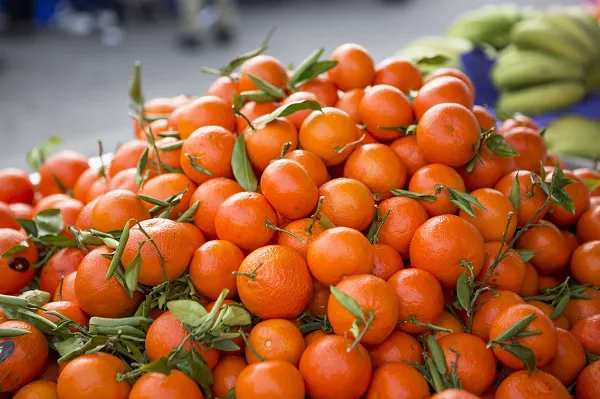"Spanish mandarins came onto a good market. It was empty, with those from South Africa being as good as gone," says Willem Koole, Frukar's commercial director, about the start of the Spanish mandarin season in early November. This Dutch company imports different fruits and vegetables. "We've imported citrus from Spain for more than 30 years, so we know plenty about that market." Production-wise, Willem thinks growers in Spain will harvest about 40% fewer mandarins, which is why he expects prices to remain good. He points out that this does depend on the Moroccan harvest, also said to be far smaller and with smaller-than-usual fruit.

Oranges are a different story. Unlike mandarins, that market is not empty, notes Willem. "There are plenty of smaller-size juicing oranges from South Africa. The first Navelina varieties from Spain are small too. That's not helping the market." He says citrus cold treatment regulations meant there was little supply in June and July, and prices were high. But after that, treated South African citrus was finally allowed to enter the market, and prices dropped.
Small sizes
"So, there are too many small oranges from South Africa, and Spain, too, is sending small fruit, so current market prices are far too low,” continues Willem. The Spanish orange crop is also smaller than usual; some 25% fewer Navelinas and Salustianas are expected, and the fruits are small. "There are hardly any large calibers." For the later varieties - such as Navels, Powels, or Lane Late's, for example - he assumes normal production. The lower mandarin and orange yields are mainly due to climate change, especially the drought and the past growing season's lousy weather.
Willem says mandarin consumption is declining somewhat too. "If a product's very expensive for a long time, consumption falls." And those product prices increasing is inevitable. "In Spain, costs have risen between 50 and 150%. Add it all up, and mandarins will be a lot pricier." According to Koole, currently, some of those costs are absorbed in the chain, and some are passed on.
Consumer spending
He thinks those cost increases will affect consumer spending. "In the end, the general public will have to fit the bill, though, they too have less and less to spend. If fruit and vegetables become too expensive, I think people will look for more affordable alternatives." Frukar is primarily focused on continuity for itself and its suppliers. "We can manage that if there's a market shortage. But if prices are high, there'll soon be enough on the market," explains Willem. That is already happening with organic citrus, he observes, where demand is decreasing due to high prices.
Willem says sustainability is gaining traction with buyers. PlanetProof is, for instance, a well-established concept and many growers easily meet supermarkets' above-legal requirements. But that has a downside, adds the commercial director. "These developments don't benefit shelf life. Supermarket, as well as consumer wastage, is, thus, increasing. Plus, if people buy an expensive bag of mandarins or oranges and those last less than a week before they have to be tossed away, they're not going to buy those products so readily again," Willem concludes."
Willem Koole Frukar
Frukar
Tel: :+31 (0)180 64 65 32
wkoole@frukar.nl
www.frukar.nl
